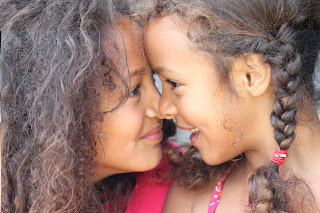My inspiration for theme 2 came from a mixture of sources as shown from my research, I particularly liked the work of Mario Testino as I felt he was able to capture the persons personality and feeling in the images. I like the style of Magnum and Venture photography, contempory portraiture photography - magical realism. In the images below I have also tried to do this.
The image above captures the facial expressions of being mesmerised at a stunt show. Deep in thought. The main focal point is the face whilst the background has been deliberately put out of focus to emphasise the facial expressions. Lighting conditions were good and the image is about shapes and capturing the feeling of the individual at that moment.
For the image above I choose a low viewpoint for a different perspective on the individuals. I tried to keep the fun aspect alive by capturing them from the low viewpoint, this alters the perspective of the subjects and they appear taller than they actually are like an optical illusion. The main focal point is both individuals. This image is more about lines and colour and perspective. Your eyes are initially drawn to the individuals feet and then up through the image to their faces.
This image is similar to the one above but from a different view point of front facing. The main focal point id the boy. The intention of the image was to capture the sibling relationship between a brother and sister. This image is about shapes, colour and forms. The composition of the image with the boy being brought more into the front of the image helps to add the feeling of sibling rivalry with him being the cheeky bossy one.
Using quick shutter speed I captured the fast moving swing. I like this image as it is fun and capture the excitement on the individuals faces. The image composition is filled with the individuals again this image was taken from a low viewpoint to help to create the height of the swing. The background gives the impression of layers with the bark and then the grass with the cloudy sky in the top half of the image. The background has been put slightly out of focus with a mid f stop used. It is about lines and shapes and colour.
I chose the above three images as the images capture the mood and feeling and expression of each individual. The top two reflect the style of Mario Testino as the individual isn't looking directly at the camera. The viewpoint and composition has been kept simple to allow the focus and emphasis to be on the face and eyes. The hair in the top two add texture and interest.
This is one of my favourite portrait images because it evokes a feeling of fun and happiness. The individual has been kept in focus whilst he sea in the background is out of focus to allow full impact of the individual. I got her to jump up and down to try to reflect the influence of Frederich Seidensucker.
A similar shot but with a different feeling I also took the image from a different angle to make it more interesting.
This image I think captures the innocence of childhood. It shows good use if the rule of thirds and composition. Again this image being influenced by both Mario Testino and also the contemporary feel of Venture photography. This was taken from a low perspective.




















































